In the previous post, we gave you a basic idea of a Project and project Management. In this article, we’re going to share a few simple and quick tips about project life cycle. What the project life cycle is and why it is used and other related concepts.
What is a Life Cycle?
The series of phases that a project passes through from its start to its completion is called project life cycle, while a phase is a collection of related project activities that culminates in the completion of one or more deliverables.
PMBOKGUIDE

Set of Defined Project Phases
A good project management system follows a standard life cycle with defined project phases based on best practices in the project management. This generic life cycle may be adapted to the specific needs of the organization.
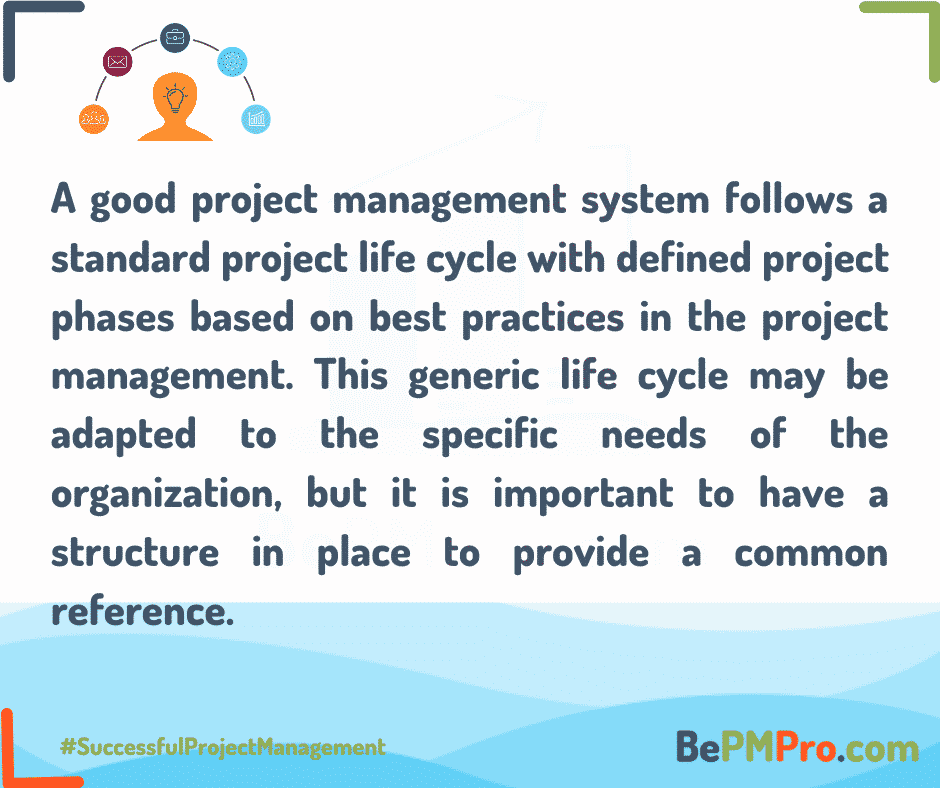
General Process Groups
PMBOK Guide defines five general process groups in a project life cycle: Initiating (authorize the project), Planning (define scope & objective), Executing (do the work), Monitoring and Controlling (track and review progress), Closing (finalize the project).
PMBOKGUIDE
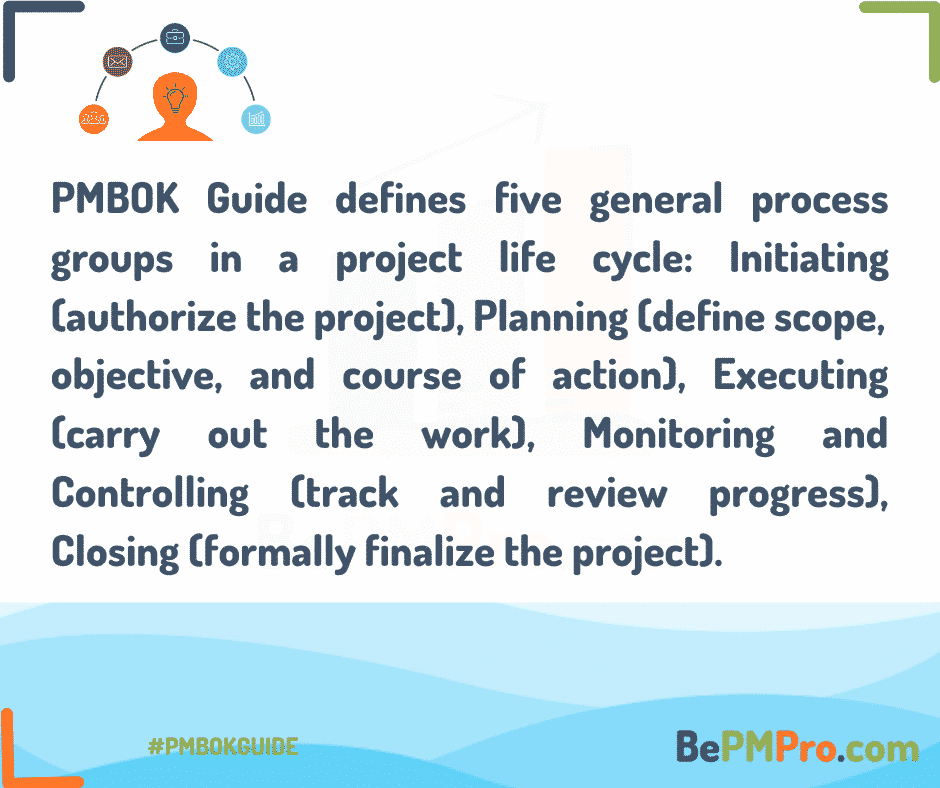
Exploring Project Life Cycle
The life cycle of a project can be divided into four stages: starting the project, organizing and preparing, carrying out the work, and closing the project. These four stages can be mapped to five process groups defined by PMBOK GUIDE.
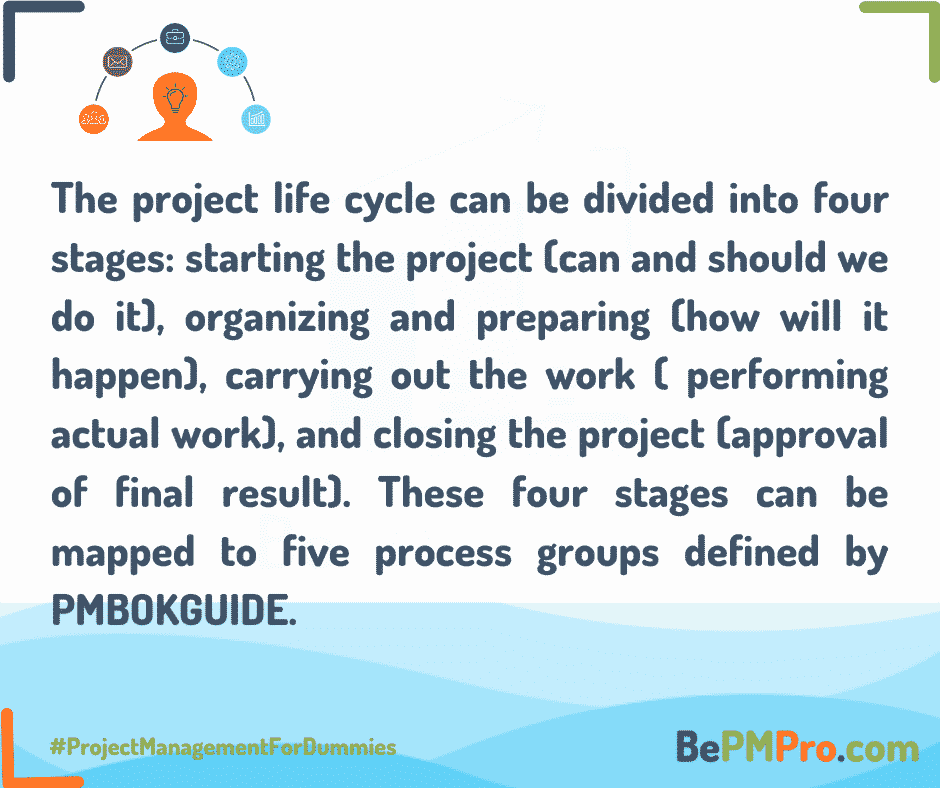
Types of Project Life Cycles
The life cycles of a project can be of four types: Predictive, Iterative, Incremental, or Agile.
AgilePracticeGuidePMI
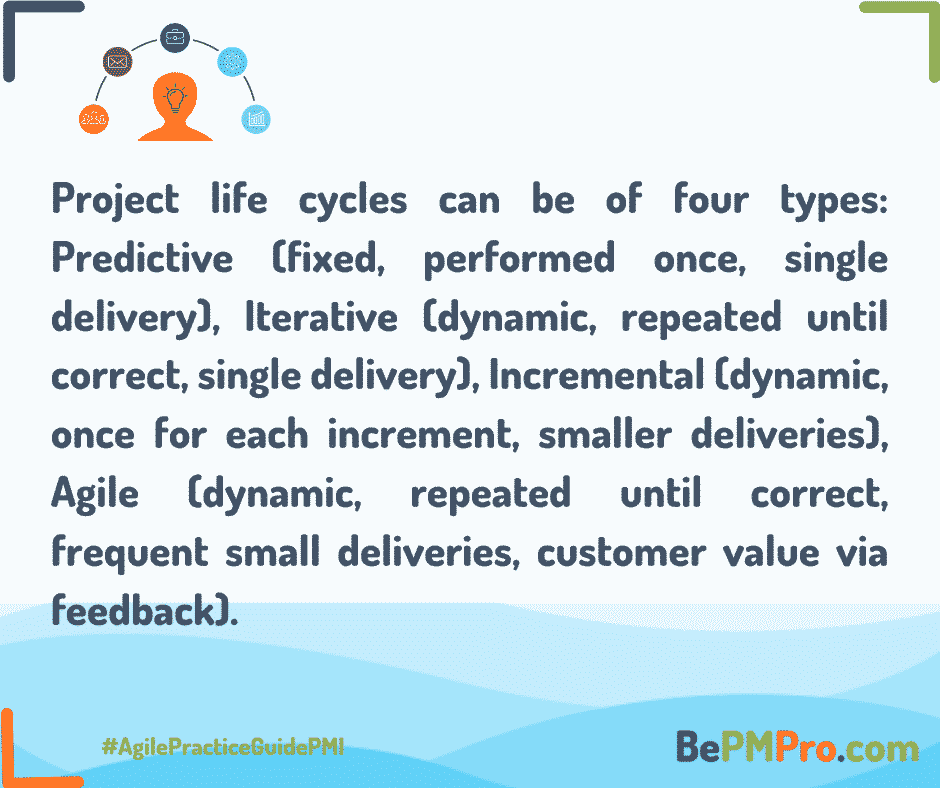
Steps Performed During a Life Cycle
The steps during a project cycle to manage a project include define the problem, develop solution options, plan the project, execute the plan, monitor and control progress, close the project.
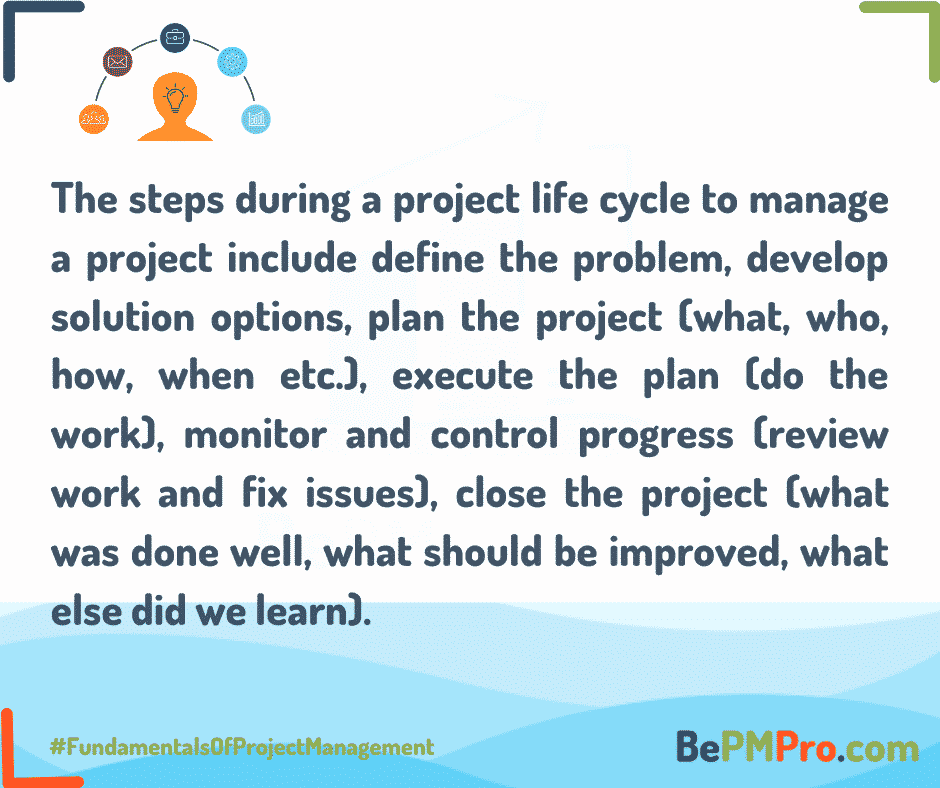
Life Cycle Can Be Customized
The life cycle of a project vary in length from a few days or weeks to several years, depending on the content, complexity, and magnitude of the project. Moreover, not all projects formally go through all the phases of the project life cycle.
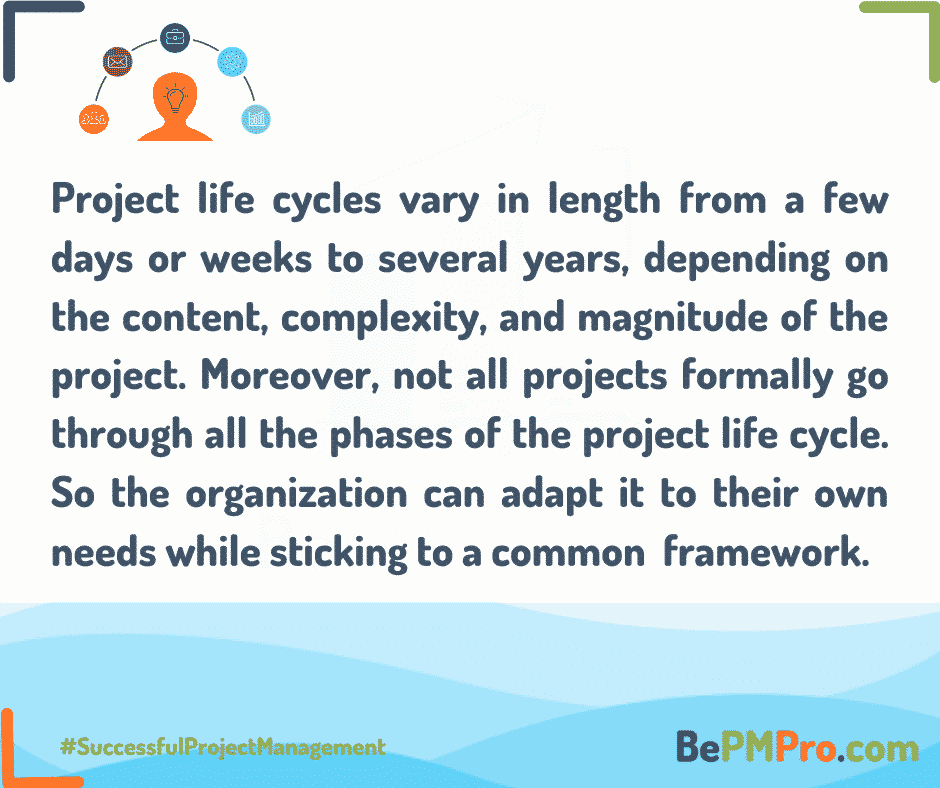
Project Life Cycle Infographics
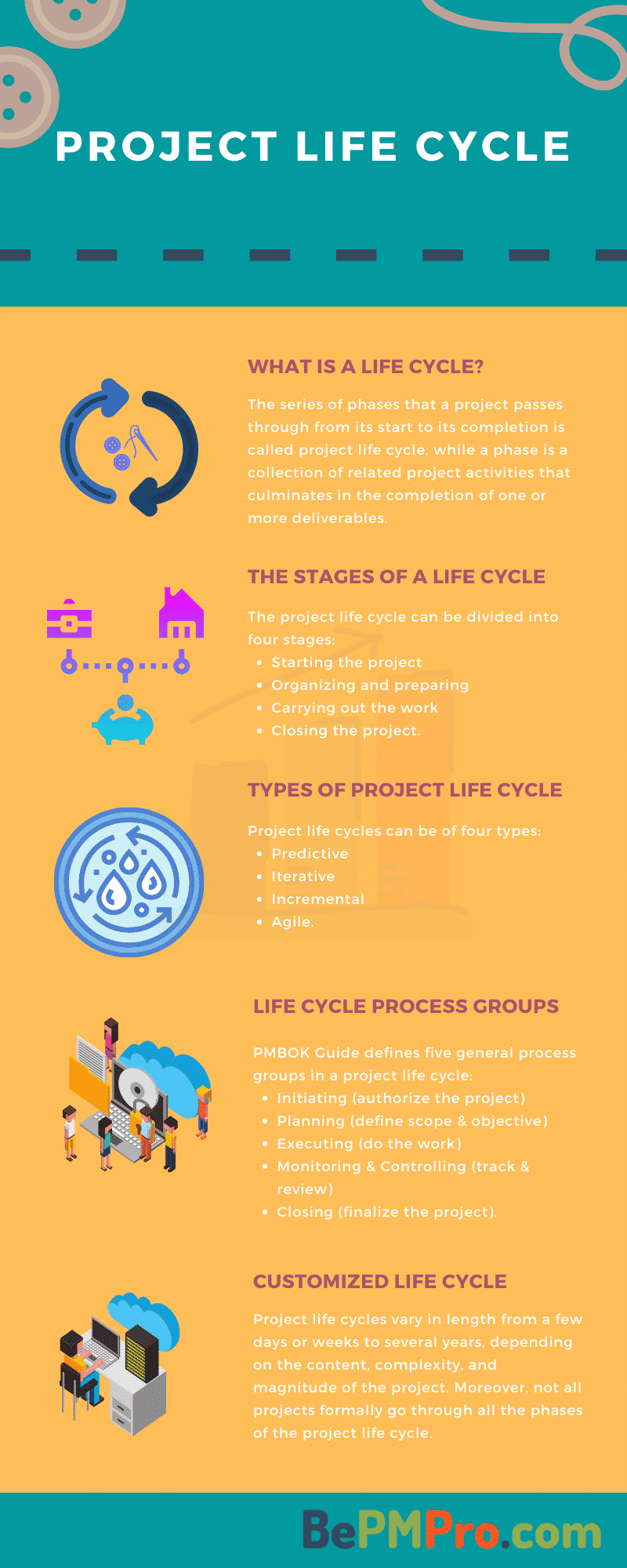

You must log in to post a comment.